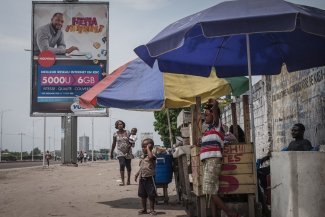
This Wednesday, world leaders meeting at the UN general assembly will attend a UN ‘special event’ to look at health in the post-2015 Millennium Development Goals (MDGs) agenda.
When the UN launched the MDGs back in 2000, health formed a real cornerstone of the programme. But what will be the priorities concerning health in the post-2015 era?
In contrast to nearly fifteen years ago, when the current MDGs were negotiated, the global development context has changed substantially. The financial and economic crisis has severely affected the development budgets in many so-called ‘donor countries’.
At the same time, emerging countries like Brazil, Russia, India, China and South Africa – the BRICS – are playing a much more prominent role now in helping to shape the global health agenda.
In the current negotiations about the post-2015 agenda, one health goal in particular is in pole position, and that’s universal health coverage (UHC), as advocated by the global union federation Public Service International.
It is possible this could succeed the current MDGs on child mortality, AIDS, and malaria and tuberculosis. UHC means that all people in a specific country can receive the healthcare they need without running the risk of financial ruin to pay for it.
According to Andrew Cassels,Director of Strategy at the World Health Organization (WHO), the global health community is a supporter of one, broad health goal. “Many of us realise that the current – rather privileged – MDG situation, with three goals concerning specific health issues, is not bearing repetition.”
So how will the post-2015 health goal of UHC work?
The concrete content is still in the process of negotiation but we can see already some chalk marks. At this week’s UN meeting on the MDGs, organisers will call for a new, socially-responsible form of health governance. One that includes approaches which go beyond market-driven health responses.
“An example of such a non-market driven health response is a social protection floor option,” says Zuzanna Muskat-Gorska, Policy Advisor at the International Trade Union Confederation (ITUC). “This floor option should be universal, equitable and sustainable, with a central focus on the role of quality public services.”
Trade unions are heavily advocating for the post-2015 agenda.
“We emphasise that health is fully related to its social and economic determinants and consequences, and therefore it can’t be treated in isolation from social protection commitments. Health can be considered to be a fundemental goal as well as a key cross-sectoral indicator of the three dimensions of sustainable development: economic, social, environmental,” says Muskat-Gorska.
What place HIV and AIDS will receive in the post-2015 agenda, is still unclear. AIDS remains one of the most powerful indicators for health inequalities worldwide. “AIDS remains an issue of social injustice,” says Muskat-Gorska. “We see it as a proxy for discrimination and stigma and economic inequality. It’s obvious that the post-2015 framework must respond to this challenge. And lessons learned should not be lost.”
Even today, sub-Saharan Africa continues to be home for 67 per cent of the total number of people who live with HIV, and 90 per cent of new infections in children.
So what can trade unions do?
“We act as a catalyst for broader progress on health and development – to showcase that health must be recognised as a human right and a global public good. The emphasis in the post-2015 framework should therefore lie on the responsibilities of the international community, national governments and other stakeholders as duty-bearers.”








